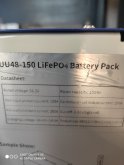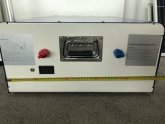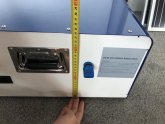heathnorton
New Member
- Joined
- May 14, 2020
- Messages
- 1
Hi all
I am based in zimbabwe and am testing some LifePo4 batteries I have managed to source here.
Unfortunately the supplier has no idea technically and I am also just learning .
I am testing a 48volt 150amp hr, it seems the cells are BYD (7.2kwh) presume second life or grade b ?
the battery keeps cutting off at 51.2 volts on the display when i try and run a test load of 300watts
I charge battery to full 54.5 float boost set to 58 volts and set cutt-off @ 48 volts.(not sure if these are correct)

The 300watts load only last 7 hours before the battery cuts off and according to my calculation
that is only about 50amps ? surely is should be getting another 70amps battery life at 80% DOD
As stated i am learning and any help would be appreciated. I am using a PHOCOS 5kva 48 volt inverter
attached are some pics of the battery bank if that helps. many thanks all
I am based in zimbabwe and am testing some LifePo4 batteries I have managed to source here.
Unfortunately the supplier has no idea technically and I am also just learning .
I am testing a 48volt 150amp hr, it seems the cells are BYD (7.2kwh) presume second life or grade b ?
the battery keeps cutting off at 51.2 volts on the display when i try and run a test load of 300watts
I charge battery to full 54.5 float boost set to 58 volts and set cutt-off @ 48 volts.(not sure if these are correct)


The 300watts load only last 7 hours before the battery cuts off and according to my calculation
that is only about 50amps ? surely is should be getting another 70amps battery life at 80% DOD
As stated i am learning and any help would be appreciated. I am using a PHOCOS 5kva 48 volt inverter
attached are some pics of the battery bank if that helps. many thanks all




